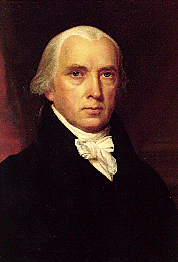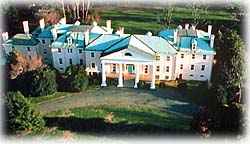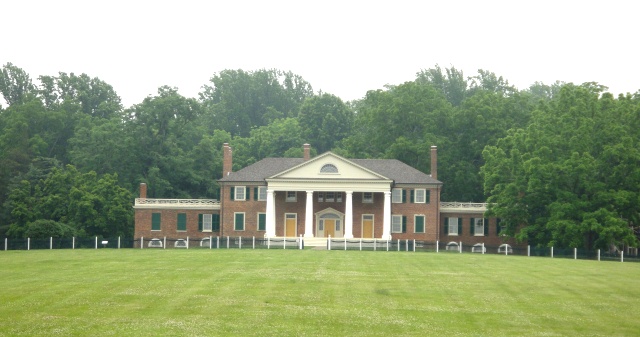 Having toured Jefferson’s Monticello on Tuesday, it only made sense to visit the home of his compatriot, James Madison, which he called Montpelier. There are many accomplishments to attribute to Madison and, in my opinion, he holds a higher place of honor than Jefferson in the saga of the Founding.
Having toured Jefferson’s Monticello on Tuesday, it only made sense to visit the home of his compatriot, James Madison, which he called Montpelier. There are many accomplishments to attribute to Madison and, in my opinion, he holds a higher place of honor than Jefferson in the saga of the Founding.
Madison attended the College of New Jersey—now Princeton—and studied under its president, John Witherspoon, a clergyman who arrived from Scotland prior to the Revolution. Witherspoon is called by some “The Man Who Shaped the Men Who Shaped America” because he tutored so many early political leaders as well as ministers. They include one president [Madison], one vice president, thirteen governors, three Supreme Court justices, twenty senators, and thirty-three congressmen. Witherspoon also was a signer of the Declaration of Independence.
Madison learned much from his mentor and applied it to the science of government. As a result, when he showed up at what we now call the Constitutional Convention, he had thoroughly studied the history of representative governments and came prepared to offer his plan for the reformation of the Articles of Confederation, which weren’t workable. The heart of his plan became the new Constitution, thereby earning him the title of “Father of the Constitution.” He even kept detailed notes on the debates, writing in shorthand, then later transcribing the notes into fuller accounts. Those were eventually published as Madison’s Notes on the Constitutional Convention, a foundational piece of American history.
He engineered the Bill of Rights through the Congress and then out to the states for ratification. During Jefferson’s presidency he served as the secretary of state, and succeeded Jefferson as president for two terms. The greatest challenge of his tenure was the War of 1812, which, although there were a number of problems and a humiliating sacking of Washington, DC, by British troops, the nation emerged stronger than before and Madison still popular. Later, he worked alongside Jefferson to establish the University of Virginia, becoming its second rector.
A few years after his death, his wife, Dolley, had to sell Montpelier. It changed hands multiple times before the DuPont family bought it in 1901. Throughout the twentieth century, the DuPonts made alterations to the original mansion. It looked like this only a decade or so ago:
While beautiful, it was not the Montpelier of Madison. A complete renovation began in 2000, dedicated to returning it to how it looked when Madison lived there. That renovation is complete now, so this was the first time I was able to visit it as Madison saw it. It has the classic early Virginia architecture once again:
It was a delight to walk through the rooms knowing this was now the genuine Madison home. I wish I could share some photos of the interior, but photography wasn’t allowed inside, as with most historic homes. But I definitely felt the spirit of Madison in the place. Now that it has been returned to its pristine condition, I urge everyone who can to visit. If you have a love for or fascination with America’s early history, you won’t be disappointed.


